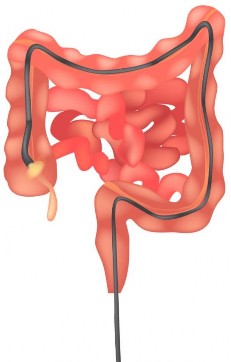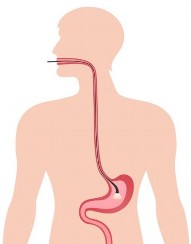
What is flexible sigmoidoscopy?
Flexible sigmoidoscopy uses a flexible tube with a ‘video camera’ at the tip to inspect the lining of the rectum, anus and lower part of the colon (bowel). The instrument is about 1 cm in diameter.
What preparation is required?
Your doctor will tell you what preparation is needed. If you are not having a sedative for the procedure, you
don’t need to fast beforehand. If your doctor plans to give you sedation for the procedure, you will need to have an empty stomach. This will require fasting (having no food or drinks) for 6 hours before the procedure.
Usually, a small enema (a solution that is inserted into the rectum to clean the lower bowel) is the only preparation, and it is given just before the procedure. Sometimes your doctor may decide not to use any preparation at all. It is unusual to require a full bowel clean-out.

Creatus | shutterstock.com
Should I keep taking my current medications?
You can keep taking most medications as usual. Tell your doctor about any medicines that you’re taking – particularly blood-thinning medications, such as aspirin products, clopidogrel (Plavix®), ticagrelor (Brilinta®), warfarin, rivaroxaban (Xarelto®), apixaban (Eliquis®) and dabigatran (Pradaxa®), as well as any diabetes medications or insulin.

What can I expect during a flexible sigmoidoscopy?
You will lie on your side while your doctor moves the endoscope through the rectum and colon. You might experience a feeling of pressure, bloating or cramping during the procedure. This is normal.
What if the flexible sigmoidoscopy finds something abnormal?
If your doctor sees an area that needs further evaluation, they might take a biopsy (a sample of the colon lining) to be analysed. Biopsies are used to identify many conditions, and your doctor might take one even if the colon looks normal. The biopsy does not hurt.
Polyps are common growths from the lining of the colon that can vary in size and type. If your doctor finds polyps, they might remove them, take a biopsy of them or organise a colonoscopy to examine the entire colon.
What happens after a flexible sigmoidoscopy?
Your doctor will explain the results to you when the procedure is finished. You might feel bloating or mild cramping because of the air that was passed into the colon during the examination. This will disappear quickly when you pass gas. If you were given a sedative, it is very important that you do not drive a car, travel on public transport alone, operate machinery, sign legal documents or drink alcohol for the rest of the day after the test. It is strongly advised that a friend or relative takes you home and stays with you. If you were not given sedation, you will be able to drive afterwards.
What are the possible complications of flexible sigmoidoscopy?
Flexible sigmoidoscopy and biopsy are very safe when performed by doctors who are trained and experienced in these procedures. Complications are very uncommon. These include problems such as bleeding from the place where a biopsy was taken or a polyp was removed and damage to the wall of the bowel (a perforation). These are rare, but it is important for you to recognise early signs of possible complications. Contact your doctor or the hospital if you notice severe abdominal pain, fevers and chills or rectal bleeding.
Who can I contact if I have any questions?
If you have any questions or need advice, please talk to your doctor before the procedure.
Acknowledgements
This resource was reviewed and updated by the following health professionals in 2022:
Dr Adam Haigh, Gastroenterology Advanced Trainee, Gold Coast University Hospital, Gold Coast QLD Australia
Dr Matthew Remedios, Senior Consultant Gastroenterologist, Royal Brisbane and Women’s Hospital, Brisbane QLD Australia
Requests and enquiries concerning reproduction and rights should be addressed to: Gastroenterological Society of Australia (GESA) Level 1, 517 Flinders Lane, Melbourne VIC 3000 | Phone: 1300 766 176 | email: gesa@gesa.org.au | Website: http://www.gesa.org.au
This document has been prepared by the Gastroenterological Society of Australia and every care has been taken in its development. The Gastroenterological Society of Australia and other compilers of this document do not accept any liability for any injury, loss or damage incurred by use of or reliance on the information. This work is copyright. You may download, display, print and reproduce this material in unaltered form only (retaining this notice) for your personal, non-commercial use or use within your organisation. Apart from any use as permitted under the Copyright Act 1968, all other rights are reserved. © 2022 Gastroenterological Society of Australia ABN 44 001 171 115.
Flexible Sigmoidoscopy


